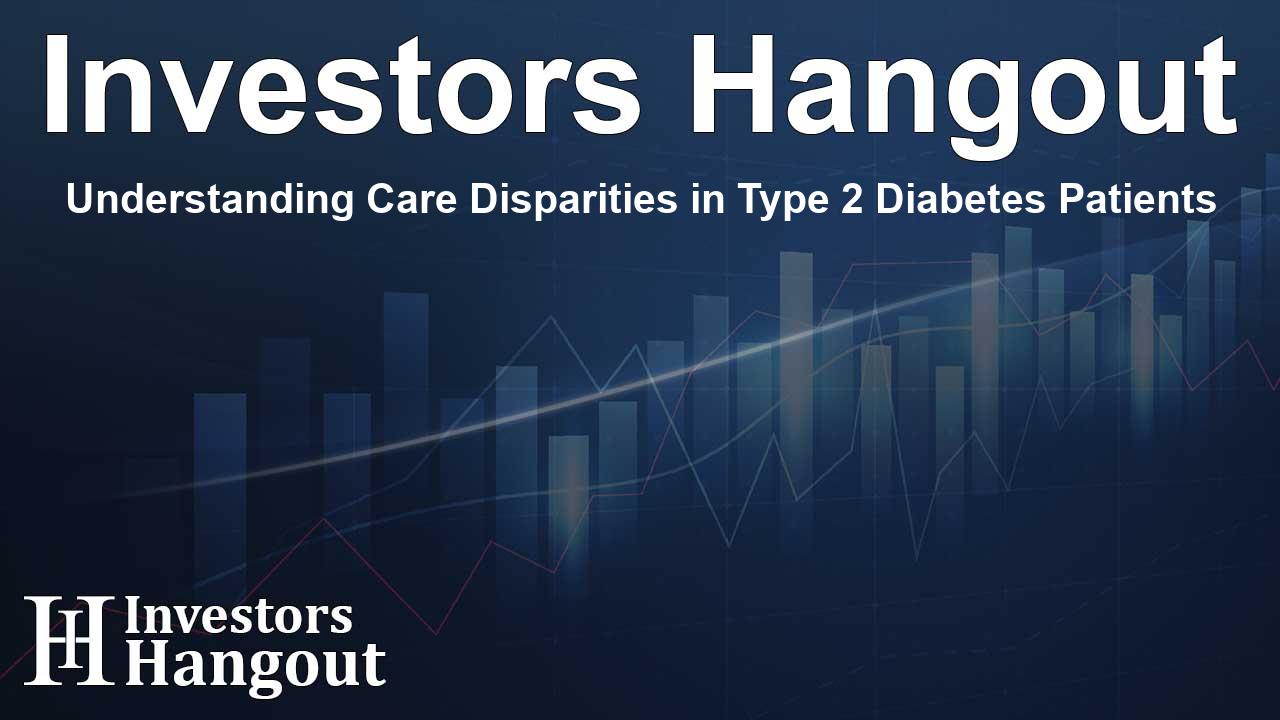Understanding Care Disparities in Type 2 Diabetes Patients

Addressing Care Disparities for Type 2 Diabetes Patients
Recent findings reveal pressing disparities in the healthcare of patients with type 2 diabetes (T2D) that correlate tremendously with their neighborhood's social conditions. Insights revealed in a report by Vizient, Inc. shed light on these critical healthcare challenges faced by many individuals living in areas marked by high social needs.
The Rising Challenge of Diabetes
The increasing rates of diabetes, particularly in the United States, are alarming. It is estimated that about 11.6% of the population, which translates to roughly 38.4 million people, are living with either type 1 or type 2 diabetes. Added to that, there are approximately 38% of U.S. adults suffering from prediabetes, making early intervention and effective management more vital than ever.
Significance of Data on Care Disparities
Maddie McDowell, MD at Vizient, emphasizes the importance of understanding these disparities. "When providers have the insights that highlight disparities among their patient populations, they can tailor interventions to meet their patients' specific needs," she explains. Understanding how environmental and social factors influence healthcare access is key to improving patient outcomes.
Insights from Recent Analysis
The report's data was compiled from multiple sources, including Medicare claims data and the patented Vizient Vulnerability Index. The insights drawn from this report demonstrate critical trends in care utilization, preventive services, and early intervention among T2D patients over several years.
Acute Care Utilization Demographics
A stark contrast in acute care utilization has been identified. For instance, adults aged 18 to 50 in high social needs ZIP codes had emergency department (ED) visits at more than double the rate of those living in lower need areas. Hospital admission rates for adults with T2D aged 18 to 60 also reflected a similar pattern, showcasing the urgent healthcare needs of these communities.
Disparities in Preventive Services
Preventive measures, such as smoking cessation programs, nutritional advice, and exercise plans, tend to be under-utilized across all demographics but are alarmingly less accessed in high social needs neighborhoods. Less than half the patients in these areas engaged with crucial preventive services compared to their counterparts in lower need areas, revealing significant gaps in healthcare delivery.
Early Intervention Critical to Patient Outcomes
Moreover, early intervention cannot be overstated. Patients diagnosed with T2D who do not consult with a primary care physician within a year are much more likely to face complications as time progresses. Statistical data shows that for patients aged 30 to 39, complications rise by 5.4% when primary care interactions are lacking.
The Role of Vizient in Healthcare Improvement
Vizient stands out as the nation's largest provider-driven healthcare performance improvement company, playing an essential role in addressing these disparities. Serving over 65% of acute care providers in the U.S., including 97% of academic medical centers, Vizient operates on a massive scale with an impressive contract portfolio amounting to $140 billion in annual purchasing volume. This significant financial weight empowers the organization to support high-value, cost-effective care solutions.
Expansion of Advisory Services
In 2024, Vizient further enhanced its advisory services by acquiring Kaufman Hall, which equips healthcare providers with tools for financial, strategic, clinical, and operational improvements. Through these advancements, the organization aims to promote better outcomes for healthcare systems and their patients alike.
About Vizient, Inc.
Vizient, Inc. is headquartered in Irving, Texas, and maintains operations nationwide. As the leading force in healthcare performance improvement, they continue to serve a substantial portion of healthcare providers across the country. To learn more about their services and initiatives, visit their official website.
Frequently Asked Questions
What does the Vizient report focus on?
The report highlights care disparities in type 2 diabetes patients related to social needs in neighborhoods.
Why is early intervention important for diabetes patients?
Early intervention significantly reduces the risk of complications and insulin dependence in diabetes patients.
How does socioeconomic status influence healthcare access?
Patients from high social needs areas experience greater challenges in accessing preventive and acute care services.
What is the role of Vizient, Inc. in healthcare?
Vizient promotes performance improvement among healthcare providers to enhance patient care delivery.
What was the data source for the report?
The report combines Medicare claims data with additional proprietary datasets to analyze care utilization.
About Investors Hangout
Investors Hangout is a leading online stock forum for financial discussion and learning, offering a wide range of free tools and resources. It draws in traders of all levels, who exchange market knowledge, investigate trading tactics, and keep an eye on industry developments in real time. Featuring financial articles, stock message boards, quotes, charts, company profiles, and live news updates. Through cooperative learning and a wealth of informational resources, it helps users from novices creating their first portfolios to experts honing their techniques. Join Investors Hangout today: https://investorshangout.com/
Disclaimer: The content of this article is solely for general informational purposes only; it does not represent legal, financial, or investment advice. Investors Hangout does not offer financial advice; the author is not a licensed financial advisor. Consult a qualified advisor before making any financial or investment decisions based on this article. The author's interpretation of publicly available data shapes the opinions presented here; as a result, they should not be taken as advice to purchase, sell, or hold any securities mentioned or any other investments. The author does not guarantee the accuracy, completeness, or timeliness of any material, providing it "as is." Information and market conditions may change; past performance is not indicative of future outcomes. If any of the material offered here is inaccurate, please contact us for corrections.